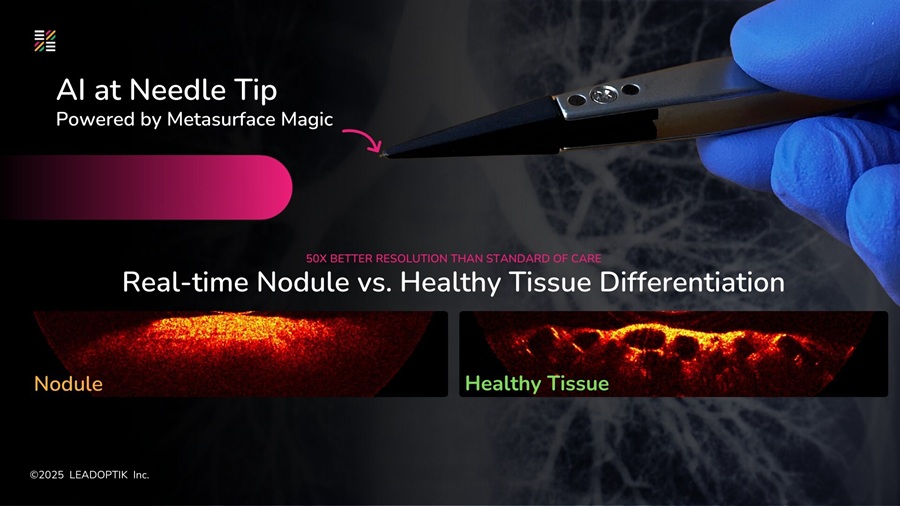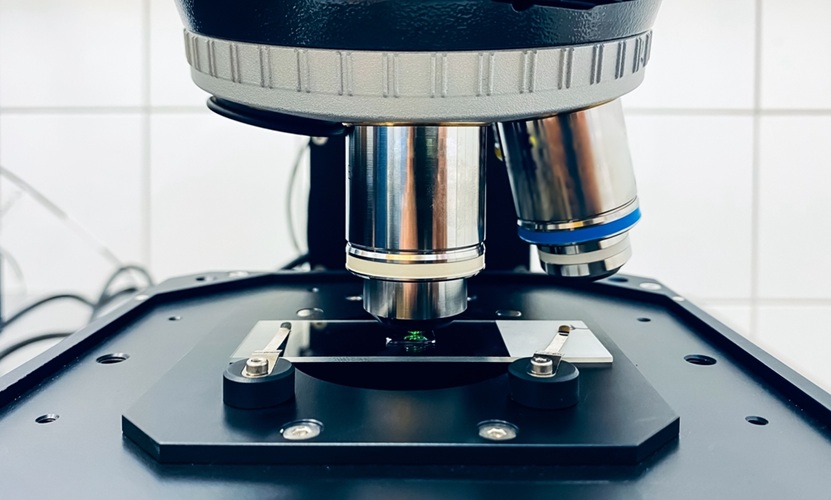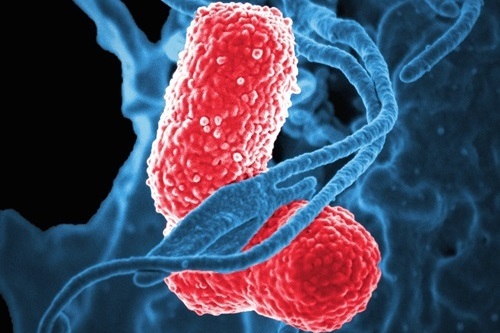Automated Collection of CTCs Improves Prostate Cancer Diagnosis
|
By LabMedica International staff writers Posted on 16 Sep 2019 |
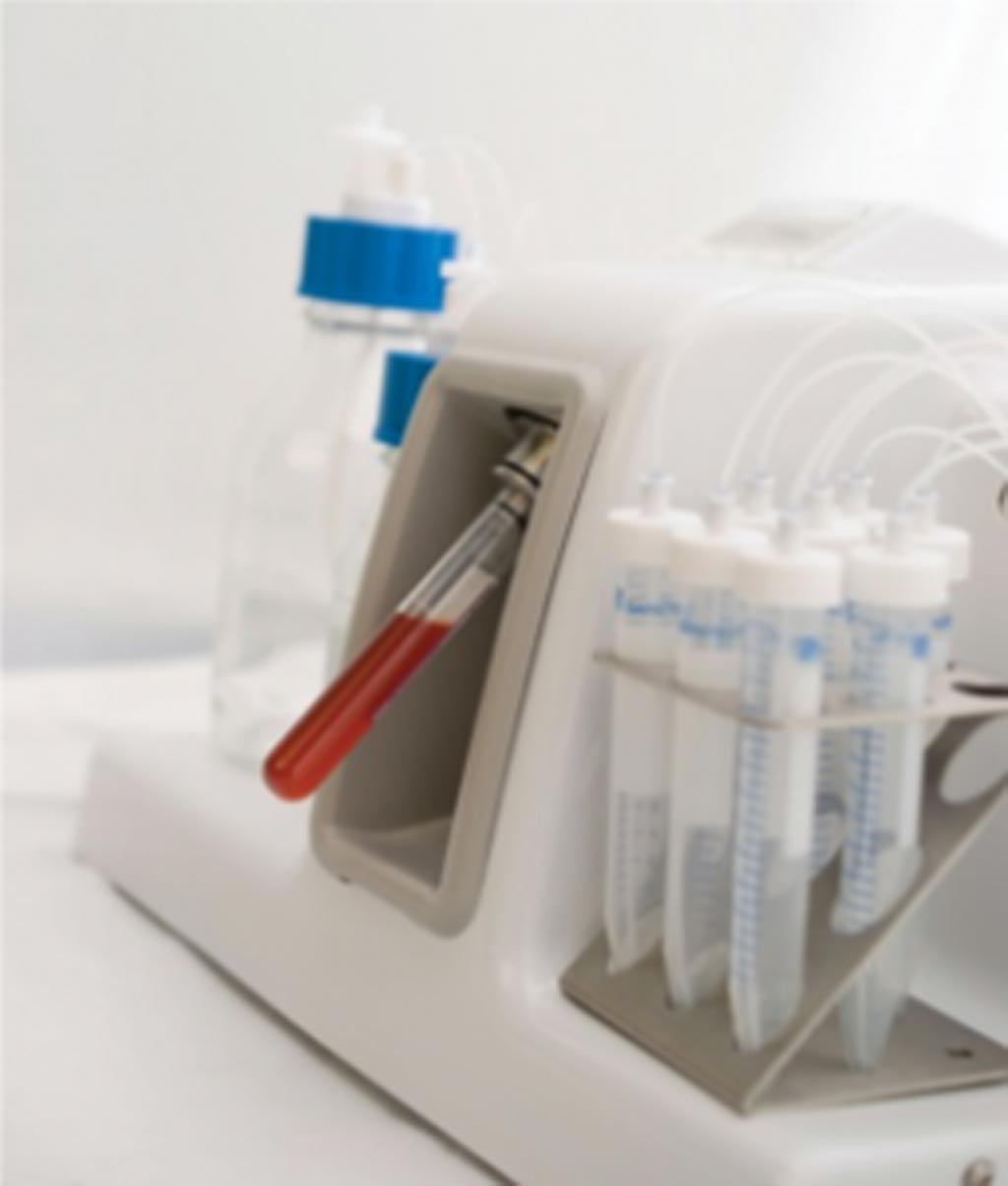
Image: The Parsortix system for collection of circulating tumor cells (Photo courtesy of ANGLE plc).
A recent paper described the benefits of circulating tumor cell (CTC) analysis for improving the diagnosis of aggressive prostate cancer beyond currently used PSA (prostate specific antigen) measurement, biopsy and/or MRI imagery.
PSA testing can result in unnecessary biopsies and over-diagnosis with consequent over-treatment. Tissue biopsy is an invasive procedure, associated with significant risk of complications. More accurate non- or minimum-invasive diagnostic approaches are required to avoid unnecessary prostate biopsy and over-diagnosis.
Towards this end, investigators at Queen Mary University of London (United Kingdom) evaluated the potential of using circulating tumor cell analysis for prostate cancer diagnosis, particularly in predicting the presence of clinically significant prostate tumors in patients prior to biopsy.
The investigators used the ANGLE plc (Surrey, United Kingdom) Parsortix system to capture and analyze CTCs from 98 pre-biopsy and 155 newly diagnosed prostate cancer patients.
The Parsortix liquid biopsy process requires a blood sample - typically 10 milliliters in an EDTA vacutainer tube. As no pre-processing is required, the tube is simply attached to the Parsortix instrument. A Parsortix filtration cassette is inserted into the instrument and the system is primed for use. The instrument automatically passes the blood through the filtration cassette, and CTCs are caught in the cassette due to their larger size and lower compressibility as compared to other blood components.
Once trapped in the cassette, CTCs may be automatically stained with selected antibodies, which enables their identification and characterization. In addition, CTCs may be enumerated by placing the filtration cassette under a fluorescent microscope. Alternatively, cells may be eluted from the cassette and recovered in buffer solution for genomic analysis.
Results obtained with the Parsortix system indicated that the appearance of CTCs in pre-biopsy blood samples was indicative of the presence of aggressive prostate cancer. When the CTC tests results were combined with those of the current PSA test, the presence of aggressive prostate cancer in subsequent biopsies was predicted with accuracy of over 90%, better than any previously reported biomarkers.
Senior author Dr. Yong-Jie Lu, professor of molecular oncology at Queen Mary University of London said, "The current prostate cancer test often leads to unnecessary invasive biopsies and over-diagnosis and over treatment of many men, causing significant harm to patients and a waste of valuable healthcare resources. There is clearly a need for better selection of patients to undergo the biopsy procedure. Testing for circulating tumor cells is efficient, non-invasive, and potentially accurate, and we have now demonstrated its potential to improve the current standard of care. By combining the new CTC analysis with the current PSA test, we were able to detect prostate cancer with the highest level of accuracy ever seen in any biomarker test, which could spare many patients unnecessary biopsies. This could lead to a paradigm shift in the way we diagnose prostate cancer."
The study was published in the August 7, 2019, online edition of the Journal of Urology.
Related Links:
Queen Mary University of London
ANGLE plc
PSA testing can result in unnecessary biopsies and over-diagnosis with consequent over-treatment. Tissue biopsy is an invasive procedure, associated with significant risk of complications. More accurate non- or minimum-invasive diagnostic approaches are required to avoid unnecessary prostate biopsy and over-diagnosis.
Towards this end, investigators at Queen Mary University of London (United Kingdom) evaluated the potential of using circulating tumor cell analysis for prostate cancer diagnosis, particularly in predicting the presence of clinically significant prostate tumors in patients prior to biopsy.
The investigators used the ANGLE plc (Surrey, United Kingdom) Parsortix system to capture and analyze CTCs from 98 pre-biopsy and 155 newly diagnosed prostate cancer patients.
The Parsortix liquid biopsy process requires a blood sample - typically 10 milliliters in an EDTA vacutainer tube. As no pre-processing is required, the tube is simply attached to the Parsortix instrument. A Parsortix filtration cassette is inserted into the instrument and the system is primed for use. The instrument automatically passes the blood through the filtration cassette, and CTCs are caught in the cassette due to their larger size and lower compressibility as compared to other blood components.
Once trapped in the cassette, CTCs may be automatically stained with selected antibodies, which enables their identification and characterization. In addition, CTCs may be enumerated by placing the filtration cassette under a fluorescent microscope. Alternatively, cells may be eluted from the cassette and recovered in buffer solution for genomic analysis.
Results obtained with the Parsortix system indicated that the appearance of CTCs in pre-biopsy blood samples was indicative of the presence of aggressive prostate cancer. When the CTC tests results were combined with those of the current PSA test, the presence of aggressive prostate cancer in subsequent biopsies was predicted with accuracy of over 90%, better than any previously reported biomarkers.
Senior author Dr. Yong-Jie Lu, professor of molecular oncology at Queen Mary University of London said, "The current prostate cancer test often leads to unnecessary invasive biopsies and over-diagnosis and over treatment of many men, causing significant harm to patients and a waste of valuable healthcare resources. There is clearly a need for better selection of patients to undergo the biopsy procedure. Testing for circulating tumor cells is efficient, non-invasive, and potentially accurate, and we have now demonstrated its potential to improve the current standard of care. By combining the new CTC analysis with the current PSA test, we were able to detect prostate cancer with the highest level of accuracy ever seen in any biomarker test, which could spare many patients unnecessary biopsies. This could lead to a paradigm shift in the way we diagnose prostate cancer."
The study was published in the August 7, 2019, online edition of the Journal of Urology.
Related Links:
Queen Mary University of London
ANGLE plc
Latest Molecular Diagnostics News
- Blood Test Identifies Multiple Biomarkers for Rapid Diagnosis of Spinal Cord Injury
- Highly Accurate Blood Test Diagnoses Alzheimer’s and Measures Dementia Progression
- Simple DNA PCR-Based Lab Test to Enable Personalized Treatment of Bacterial Vaginosis
- Rapid Diagnostic Test to Halt Mother-To-Child Hepatitis B Transmission
- Simple Urine Test Could Help Patients Avoid Invasive Scans for Kidney Cancer
- New Bowel Cancer Blood Test to Improve Early Detection
- Refined Test Improves Parkinson’s Disease Diagnosis
- New Method Rapidly Diagnoses CVD Risk Via Molecular Blood Screening
- Blood Test Shows Promise for Early Detection of Dementia
- CRISPR-Based Diagnostic Test Detects Pathogens in Blood Without Amplification
- Portable Blood-Based Device Detects Colon Cancer
- New DNA Test Diagnoses Bacterial Infections Faster and More Accurately
- Innovative Bio-Detection Platform Improves Early Cancer Screening and Monitoring
- Blood Test Could Help More Women Survive Aggressive Triple Negative Breast Cancer
- CSF Test Distinguishes Prion Disease from Other Causes of Rapidly Progressive Dementia
- Newly Identified Stroke Biomarkers Pave Way for Blood Tests to Quickly Diagnose Brain Injuries
Channels
Clinical Chemistry
view channel
Carbon Nanotubes Help Build Highly Accurate Sensors for Continuous Health Monitoring
Current sensors can measure various health indicators, such as blood glucose levels, in the body. However, there is a need to develop more accurate and sensitive sensor materials that can detect lower... Read more
Paper-Based Device Boosts HIV Test Accuracy from Dried Blood Samples
In regions where access to clinics for routine blood tests presents financial and logistical obstacles, HIV patients are increasingly able to collect and send a drop of blood using paper-based devices... Read moreHematology
view channel
New Scoring System Predicts Risk of Developing Cancer from Common Blood Disorder
Clonal cytopenia of undetermined significance (CCUS) is a blood disorder commonly found in older adults, characterized by mutations in blood cells and a low blood count, but without any obvious cause or... Read more
Non-Invasive Prenatal Test for Fetal RhD Status Demonstrates 100% Accuracy
In the United States, approximately 15% of pregnant individuals are RhD-negative. However, in about 40% of these cases, the fetus is also RhD-negative, making the administration of RhoGAM unnecessary.... Read moreImmunology
view channel
Post-Treatment Blood Test Could Inform Future Cancer Therapy Decisions
In the ongoing advancement of personalized medicine, a new study has provided evidence supporting the use of a tool that detects cancer-derived molecules in the blood of lung cancer patients years after... Read more
Cerebrospinal Fluid Test Predicts Dangerous Side Effect of Cancer Treatment
In recent years, cancer immunotherapy has emerged as a promising approach where the patient's immune system is harnessed to fight cancer. One form of immunotherapy, called CAR-T-cell therapy, involves... Read more
New Test Measures Preterm Infant Immunity Using Only Two Drops of Blood
Preterm infants are particularly vulnerable due to their organs still undergoing development, which can lead to difficulties in breathing, eating, and regulating body temperature. This is especially true... Read more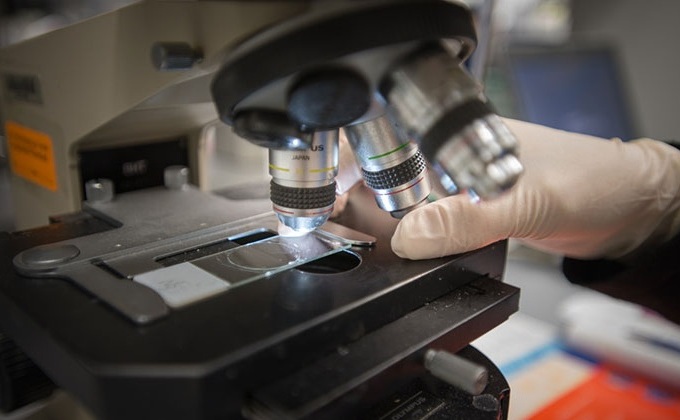
Simple Blood Test Could Help Choose Better Treatments for Patients with Recurrent Endometrial Cancer
Endometrial cancer, which develops in the lining of the uterus, is the most prevalent gynecologic cancer in the United States, affecting over 66,000 women annually. Projections indicate that in 2025, around... Read moreMicrobiology
view channel
Breakthrough Diagnostic Technology Identifies Bacterial Infections with Almost 100% Accuracy within Three Hours
Rapid and precise identification of pathogenic microbes in patient samples is essential for the effective treatment of acute infectious diseases, such as sepsis. The fluorescence in situ hybridization... Read more
Innovative ID/AST System to Help Diagnose Infectious Diseases and Combat AMR
Each year, 11 million people across the world die of sepsis out of which 1.3 million deaths are due to antibiotic-resistant bacteria. The burden of antimicrobial resistance (AMR) continues to weigh heavily,... Read more
Gastrointestinal Panel Delivers Rapid Detection of Five Common Bacterial Pathogens for Outpatient Use
Acute infectious gastroenteritis results in approximately 179 million cases each year in the United States, leading to a significant number of outpatient visits and hospitalizations. To address this, a... Read morePathology
view channel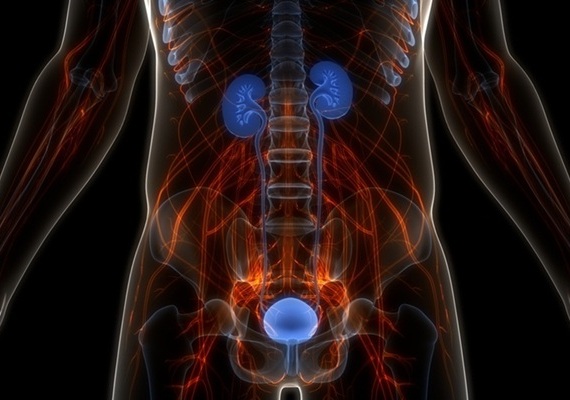
AI Model Predicts Patient Response to Bladder Cancer Treatment
Each year in the United States, around 81,000 new cases of bladder cancer are diagnosed, leading to approximately 17,000 deaths annually. Muscle-invasive bladder cancer (MIBC) is a severe form of bladder... Read more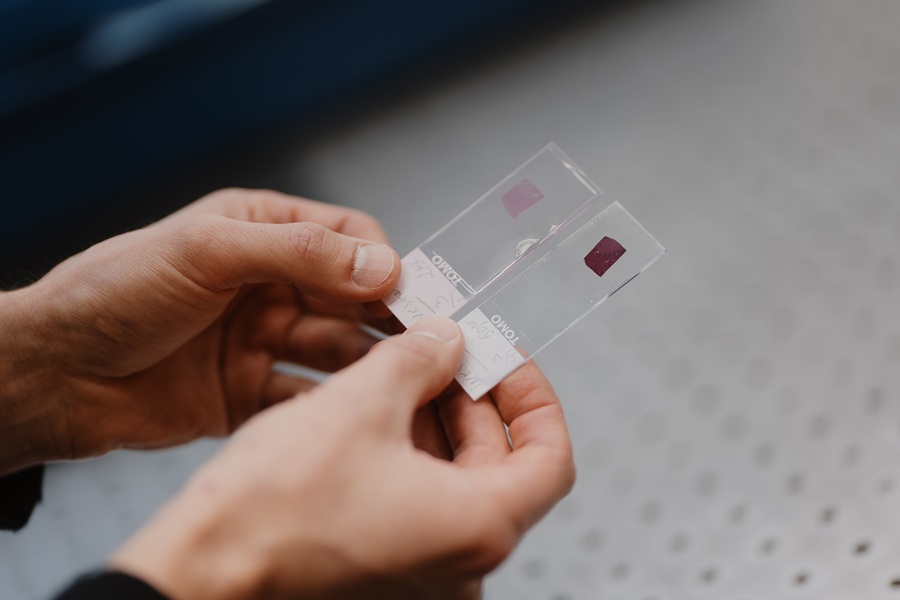
New Laser-Based Method to Accelerate Cancer Diagnosis
Researchers have developed a method to improve cancer diagnostics and other diseases. Collagen, a key structural protein, plays various roles in cell activity. A novel multidisciplinary study published... Read more
New AI Model Predicts Gene Variants’ Effects on Specific Diseases
In recent years, artificial intelligence (AI) has greatly enhanced our ability to identify a vast number of genetic variants in increasingly larger populations. However, up to half of these variants are... Read more
Powerful AI Tool Diagnoses Coeliac Disease from Biopsy Images with Over 97% Accuracy
Coeliac disease is an autoimmune disorder triggered by the consumption of gluten, causing symptoms such as stomach cramps, diarrhea, skin rashes, weight loss, fatigue, and anemia. Due to the wide variation... Read moreTechnology
view channel
Smartphones Could Diagnose Diseases Using Infrared Scans
Rapid advancements in technology may soon make it possible for individuals to bypass invasive medical procedures by simply uploading a screenshot of their lab results from their phone directly to their doctor.... Read more
Novel Sensor Technology to Enable Early Diagnoses of Metabolic and Cardiovascular Disorders
Metabolites are critical compounds that fuel life's essential functions, playing a key role in producing energy, regulating cellular activities, and maintaining the balance of bodily systems.... Read more
3D Printing Breakthrough Enables Large Scale Development of Tiny Microfluidic Devices
Microfluidic devices are diagnostic systems capable of analyzing small volumes of materials with precision and speed. These devices are used in a variety of applications, including cancer cell analysis,... Read moreIndustry
view channelLeica Biosystems and Bio-Techne Expand Spatial Multiomic Collaboration
Bio-Techne Corporation (Minneapolis, MN, USA) has expanded the longstanding partnership between its spatial biology brand, Advanced Cell Diagnostics (ACD, Newark, CA, USA), and Leica Biosystems (Nussloch,... Read more
Philips and Ibex Expand Partnership to Enhance AI-Enabled Pathology Workflows
Royal Philips (Amsterdam, The Netherlands) has expanded its partnership with Ibex Medical Analytics (Tel Aviv, Israel) and released the new Philips IntelliSite Pathology Solution (PIPS) to further accelerate... Read more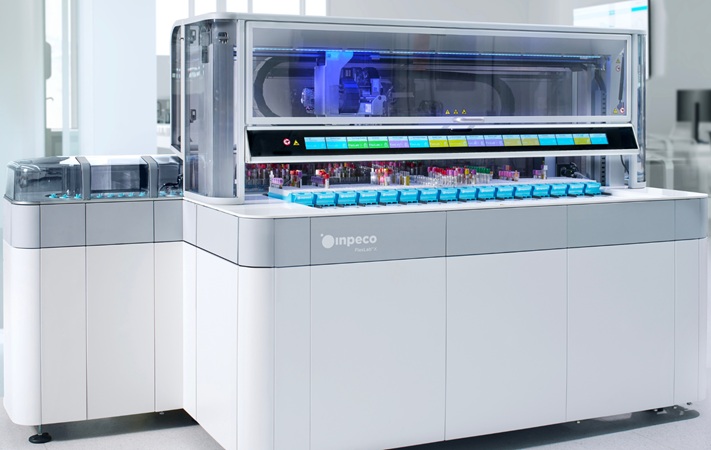
Grifols and Inpeco Partner to Deliver Transfusion Medicine ‘Lab of The Future’
Grifols (Barcelona, Spain), a manufacturer of plasma-derived medicines and innovative diagnostic solutions, has entered into a strategic agreement with Inpeco (Novazzano, Switzerland), a global leader... Read more